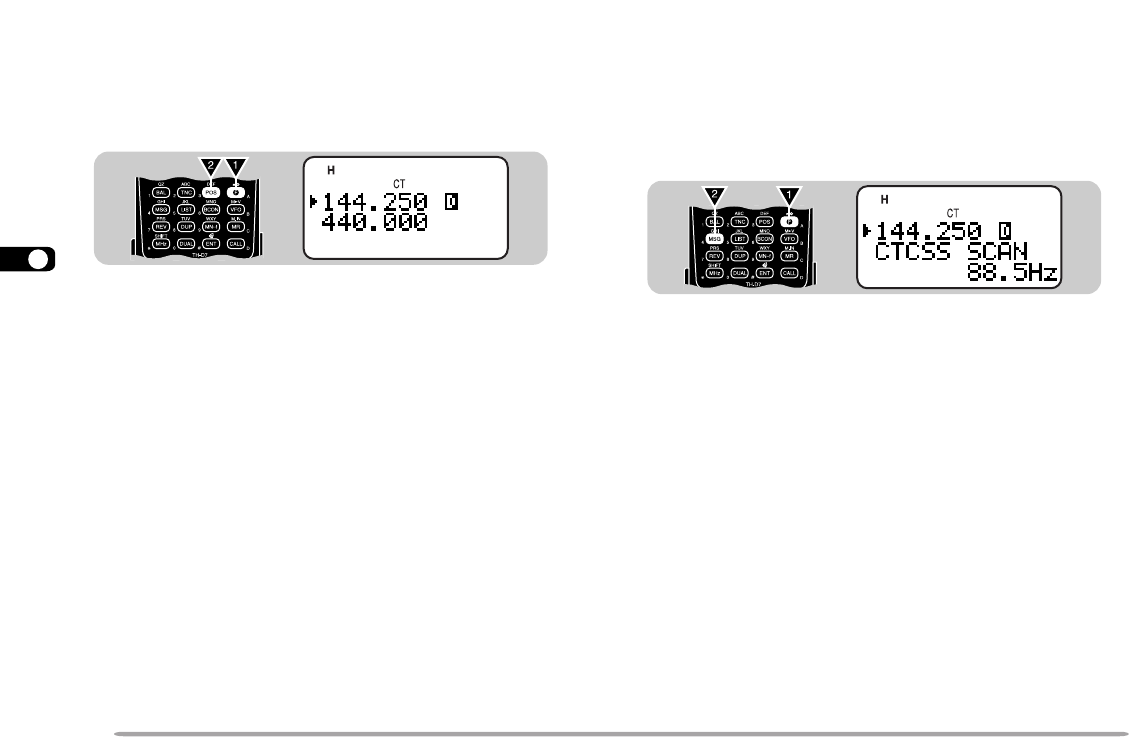
1
2
3
4
5
6
7
8
9
10
11
12
13
14
15
16
17
18
19
20
21
22
23
40
USING CTCSS
1 Press [A/B] to select band A or B.
• If necessary, press [F], [A/B] to recall the sub-band.
2 Press [F], [3] to switch the CTCSS function ON (or
OFF).
• “CT” appears when CTCSS is ON.
You will hear calls only when the selected tone is
received. To answer the call, press and hold the PTT
switch, then speak into the microphone.
Note:
◆
You cannot use the CTCSS and Tone functions simultaneously.
Switching the CTCSS function ON after activating the Tone function
deactivates the Tone function.
◆
If you select a high CTCSS frequency, receiving audio or noise that
contains the same frequency portions may cause CTCSS to function
incorrectly. To prevent noise from causing this problem, select an
appropriate squelch level {page 8}.
STSTA
CONCON
PACKETACKET
9696
BCON
DUP
9
7
5
CTCSS FREQ. ID
This function scans through all CTCSS frequencies to
identify the incoming CTCSS frequency on a received
signal. You may find it useful when you cannot recall the
CTCSS frequency that the other persons in your group
are using.
1 Press [F], [4] (1 s) to activate the function.
• The CTCSS function is switched ON.
• If you access “F–4 (CTCSS FREQ)” using [UP]/ [DWN]
in Function Select mode, press [OK] (1 s) to activate the
function.
• To reverse scan direction, press [UP] (upward scan) or
[DWN] (downward scan).
• To quit the function, press [ESC].
• When the CTCSS frequency is identified, the identified
frequency appears and blinks.
2 Press [OK] to program the identified frequency in
place of the currently set CTCSS frequency.
• The previous frequency display is restored with the
CTCSS function remained ON.
• Press [ESC] if you do not want to program the identified
frequency.
• Press [UP]/ [DWN] while the identified frequency is
blinking, to resume scanning.
Note: Received signals are audible while scanning is in progress.
STSTA
CONCON
PACKET
96
BCONBCON
DUP
9
7
5


















